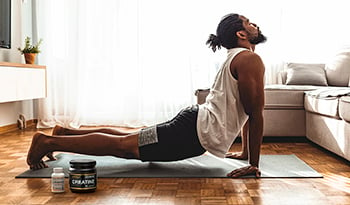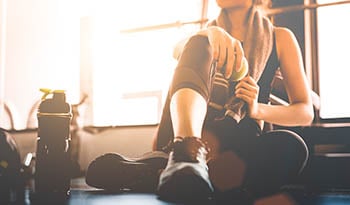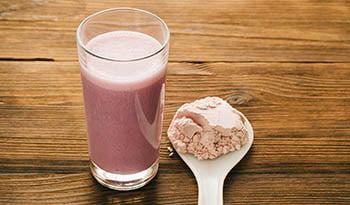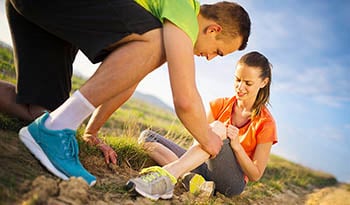Your Step-by-Step Guide on How to Recover After a Workout
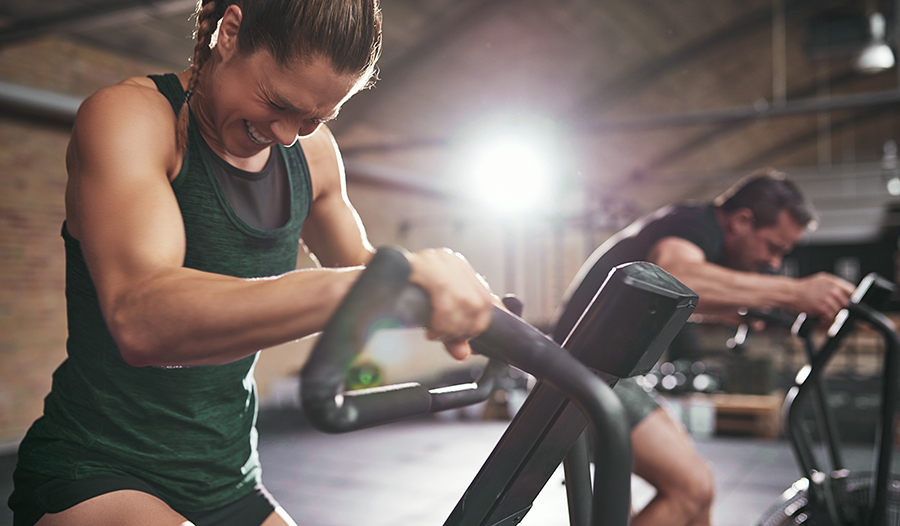
Picture it: You just hit the gym for one of the best workouts of your life. You feel great and now that you have finished your workout, the work is over, right? Wrong! The workout is only the stimulus to the results—the real work starts when your recovery begins. Have you ever heard the phrase, “you grow when you rest?” Well, your body needs time and resources to repair after a workout. Your recovery starts the second your workout ends. This step-by-step guide will help you make the most of this crucial time for your body.
Step 1: Jumpstart Recovery with Parasympathetic Breathing
Have you ever heard of diaphragm breathing? When you truly take time to unwind from your workout, deep breathing for even a few minutes can help usher your body into a more relaxed state. This first step of post-workout repair, where the body is primed for recovery, is called the parasympathetic state. Your diaphragm is the large muscle that attaches to the front of the rib cage, spine, and structures of the torso that allows you to take insufficient air and expel it so that you don’t fatigue other less efficient muscles. Breathing through your diaphragm—also known as belly breathing—can have a positive benefit to our muscles, cardiovascular system, and the body as a whole. So, how do you do it? Try a technique known as “box breathing.” Here’s how:
- After your workout, find a quiet area and lie down on your back (I like placing my feet up on a wall and closing my eyes).
- Place one hand just below your belly button and the other hand on your chest.
- Take a deep inhalation through your nose for a count of three while you fill your diaphragm with air (your stomach should move and not your chest).
- Hold your breath for another count of three.
- Exhale through your nose for another count of three, expelling all of the air you can.
- Repeat this sequence 5-10 times after every workout, and try to work your way up to 4-6 seconds each for the inhale, hold, and exhale.
Step 2: Myofascial Release
After you have finished breathing, take the opportunity to grab a foam roller and hit the areas in your body that need it the most. Foam rolling, also known as myofascial release, involves applying pressure to muscle tissue in order for muscle fibers to stretch and realign. If you’ve never used a foam roller before, it’s important to remember to take it slowly—you don’t want to move it more than one inch per second. Start on the lower part of your body, like your calves, and slowly work your way up inch by inch. Hold the roller on any tight areas or knots for several seconds until they release. Make sure to roll the calves, glutes, quads (don’t forget the sides of the quads). And don’t neglect the upper body like the lats, back, and of course, the chest. After rolling, give your body a few quick stretches until you feel nice and loose.
Step 3: Boost Gut Health
After you’ve calmed yourself through breathing and released your muscles through rolling, grab yourself a high-quality probiotic. Why would you do that after a workout? Because probiotics can actually help with your recovery process. We all have bacteria in our guts. That may sound gross, but much of that bacteria are beneficial to your body. You need to make sure that bacteria are thriving because up to 80% of your immune system is in your gut. Keeping your immune system in good shape will help to protect against illness, help you handle daily stress (and yes, working out is a stressor to your body), and support your overall post-workout recovery.
Step 4: Replenish Essential Amino Acids
I’m talking about essential amino acids (EAAs). Working out causes soft tissue breakdown, and in order for you to repair and build more tissue, you need to make sure your body has the fuel it needs to support those processes. That’s where EAAs come in. Essential amino acids can't be made by your body like other amino acids, so they need to be consumed in a supplement or food. These eight essential amino acids are phenylalanine, valine, threonine, tryptophan, isoleucine, methionine, leucine and lysine. These EAAs make up 50% of every protein in your body—if one or more is depleted, it will affect your performance, muscle building, and repair. Taking EAAs before, during, or after your workout is essential for recovery, either in supplement form or from the food you eat. Many post-workout recovery formulas contain these essential amino acids to help you recharge after an intense bout of exercise.
Step 5: Get Your Zzzs—Your ZMAs
One of the main things I talk about with my clients is not their workout or diet, but their sleep. Not getting the proper amount of sleep for your body (generally 7-9 hours) will affect your recovery, mental acuity, cortisol levels, fat storage, and even have you craving more food the following day. If you’re having trouble sleeping, there are some nutrients that can help. Have you ever had that restless feeling at night where you couldn’t get comfortable? Often that is due to a lack of magnesium in the body, which causes your soft tissues to feel tight. Taking magnesium along with zinc and vitamin B6 in a ZMA supplement can help you rest better at night. Zinc helps with cellular growth, tissue repair, and a healthy immune system. Besides the relaxation benefits of magnesium, it has also been shown to increase your stage three and four REM sleep cycles. The B6 helps to maximize the absorption of zinc and magnesium. ZMA supplements should be taken on an empty stomach before bed to support sleep.
Rest, Recover, and Perform Better
Now that you have your guide to better recovery, use some common sense with your exercise routine. If something hurts, adjust your form or try a different exercise altogether. Too often, I see people in the gym training like they were back playing high school sports, but as the body ages, you have to adjust your workout accordingly. Make sure to always do a proper warmup to get your body primed to move, like a light jog, some reps on the rowing machine, dynamic stretching, or even a couple sets of the exercises you are about to do at 50% of the intended intensity. And always give your body a chance to rest and repair between workouts—you can’t train hard if your body hasn’t had a chance to fully recover beforehand.
DISCLAIMER:This Wellness Hub does not intend to provide diagnosis...













































































 Table of Contents
Table of Contents




